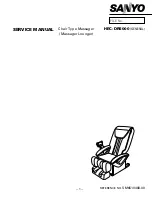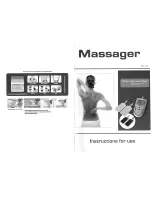
- 10 -
HEC-DR5000
(GENERAL)
Operation of Stiffness Detecting Sensor
The sensor employs two types of sensors; an photo sensor and an electrical skin resistance
sensor for monitoring two physiological factors (pulse rate and perspiration respectively).
If stiffened position is subjected to stimulation of massage, the pulse rate and perspiration
will change accordingly. The sensor monitors such change in those two factors.
The stiffness determined by a change in perspiration and
pulse rate monitored will be indicated in real time on a level
meter of a remote controller.
1;When relaxed, the perspiration tends to decrease.
2;When in normal condition, each physiological
parameter shows less change.
3;When felt stiffened, the perspiration as well as pulse rate tends to increase.
4;When feeling a pain, the perspiration significantly increases and the pulse rate tends
to increase.
In the massage position display, the position where stiffness is detected (=the point needs
to be massaged) will be displayed.
Perspiration Pulse rate
When stimulated
and felt "stiffened"
Perspiration
increases
Sensor
Detection
A stimulation given to the stiffened or
sore muscle will cause vital reaction
considered to represent a change in
sensation such as better feeling with
comfortable pains. Monitoring such vital
reaction (perspiration and/or change in
pulse rate) concurrently enables
determination of the effectiveness of the
stimulation given.
Point that may be massaged.
Position where stiffness is detected
Indicates positions where the sensor detects
stiffness by monitoring perspiration and pulse rate that will
change when better feeling is given through stimulation
by massage.
Stiffness display
Indicates stiffness in real time by
monitoring fingers for any change
in perspiration and pulse rate
during acupressure massage.
Massage position display
Pulse rate
increases
STIFFNESS
RELAX
HIGHT
STIFFNESS











































